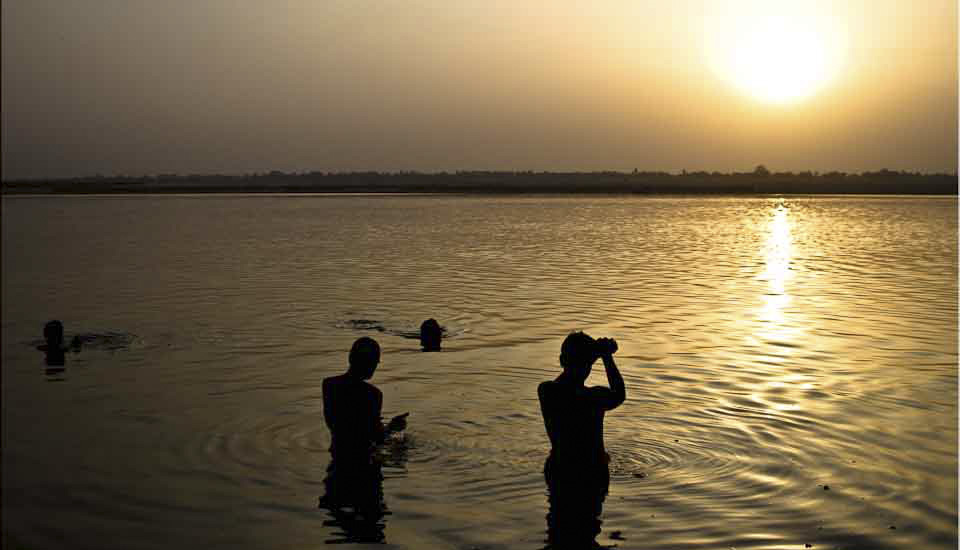.jpg)
Overlooking Saint-Cirq Lapopie
Sitting high on a cliff, the picturesque medieval village of Saint-Cirq Lapopie in the southwest of France has commanding views of the Lot River and the neighbouring fields and dwellings.
It is like stepping into the past – but with artists’ ateliers, boutique shops, and great coffee!
Saint-Cirq Lapopie is a heritage-listed medieval village in the southwest of France. Located on a steep cliff, 100m above the Lot River, it originally served as a defensive and administrative centre for one of the local viscomtés – a division of land and fiefdom smaller and less important than a duché. Much of the original architecture – some of it dating as far back as the 13th century – remains.
Today, this well-preserved commune is a member of Les Plus Beaux Villages de France – The Most Beautiful Villages in France Association and is one of the most popular tourist destinations in the Department of Lot. It is on the French Way of St. James pilgrimage route, and is – among other designations – in the heart of a Regional Natural Park and in the UNESCO Global Geopark of the Causses du Quercy.
I was visiting friends in Cahors, a mere 30 km (19 mi) to the west. Our plan was to walk 4 km (2.5 mi) along the towpath, the Chemin de Halage, from Bouziès to Saint-Cirq Lapopie (see: the Chemin de Halage). Unfortunately, rain drove us back when we were halfway, so we drove the rest of the distance, and parked above the village.
Fortunately, the rains eased, and we only contented with a light drizzle and overcast skies as we explored this charming site.
Do come along!
.jpg)
Pastorale
These rural locales are timeless!
.jpg)
Saint-Cirq Lapopie (la Popie)
As we walk down from the carpark, we have views over the karst cliffs that were formed during the Jurassic period, and of the medieval village that takes strategic advantage of its position over the river and surrounding fields.

Old House at the Top of the Village
It is always interesting to see the juxtaposition of modern cars parked next to very old architecture!

Red Berries
It is autumn – and bright red berries contrast with the wet green leaves.

Church in the Village
The gothic Saint-Cirq Lapopie Church takes pride of place in the village. It is dedicated to Saint Cyr, three year old Cyril of Tarsus who was martyred with his mother, Sainte Julitta, in Turkey the early 4th century.

Grape Leaves

Window Shutters
Shutters are common in older buildings in the south of France: they are considered essential to keep out the sun on hot summer afternoons. In the winter, they insulate against the cold.

Crucifix
Traditionally, France is a Roman Catholic country. The signs of this are everywhere.

Overlooking the Village
These are the half-timbered houses of the old bourgeoisie. Parts date back to the 13th and 14th centuries, …

Village Houses
… with the beams and upper stories added in 15th century. Today, they mostly house artists’ retreats, ateliers, boutiques, and cafés.

The Moulin de l’Aulanac
Our walk passes over a 14th-century watermill with its half-timber exterior of exposed stone. It once housed four millstones to service the needs of the district.

Mossy Roofs and Ivy Walls

Knight Guardian Signpost
The village is known for its artisans – and examples are everywhere.

Wet Cobbles in a Village Lane

Saint-Cirq Lapopie Church

Stained Glass in the Church
The church, which was started in 1522, was built on the same ground as an earlier Romanesque parish church. It retains features from that earlier time, including some 12th century sculpted acanthus leaf decorations and fragments of 13th century wall paintings. I believe the stained glass is a modern addition.

Just a Door Knocker

Rooftop Details
Peaked tiled roofs over narrow square towers and battlements are all around.

Gated Courtyards
Gardens hide behind a decorative stone fence. This complex was once a 15th century fortified house, and is now the Musée Rignault.

Overlooking the Street
From the little hill at the end of the village, we can look back over Rue de la Pélissaria.

Porte de la Pélissaria
This end of the village is marked by a well-preserved arched city gate. We walk through it, and retrace our steps.

Church on the Hill
Above us, the church dominates the horizon. You can see how the old building took advantage of the ancient rock.

Sleeping Dog

Église de Saint Cirq
Back outside the village, we get one last look at the church.

Steep Bluff
And, we look back at the Rock of La Popie. You can just see people who climbed up the promontory – as we had – for views over the village and the valley.
The entire town is like a museum, and it reminded me how much I love these distinctive old complexes in Europe.
 Saint-Cirq Lapopie has been attracting artists since the mid-1900s; we enjoyed exploring the ateliers and shops as much as we enjoyed appreciating the cobbled streets and medieval architecture!
Saint-Cirq Lapopie has been attracting artists since the mid-1900s; we enjoyed exploring the ateliers and shops as much as we enjoyed appreciating the cobbled streets and medieval architecture!
Pictures: 27September2024




























